Chintan Girish Modi
The COVID-19 pandemic has blurred the distinction between home and school for children who access their lessons using online teaching-learning platforms. Teachers are expected to churn out lesson plans, conduct classes and evaluate assignments based on the assumption that all their students have a level playing field. This is unfair and unfortunate.
Access to technology and availability of support from parents and caregivers varies from one context to another. The word ‘home’ signals a wide range of meanings based on diverse material conditions, relational dynamics and emotional associations. It could evoke feelings of comfort, warmth, abundance or deprivation, trauma and fear for different students.
This article is an invitation to explore how children’s lives are shaped by their experiences of home. It is based on children’s books published in India that feature protagonists in homes that are quite different from each other; each with its own set of joys and challenges. We live in hard times, and a little compassion is always welcome. It can go a long way.
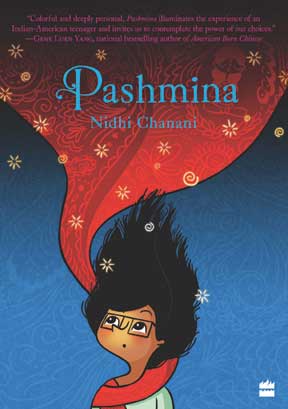
Title of the book: Pashmina
Author: Nidhi Chanani
Publishers: Harper Collins and First Second
Year of publication: 2018
This graphic novel revolves around the startling discoveries made by Priyanka, a girl who lives in the United States with her single mother who grew up in India. She is curious about why her mother chose to leave the country she once called home, and she wants to know about her father – the man who has been missing from her life. A strange set of events conspire to bring Priyanka to India. She learns that her father had abandoned her mother when she got pregnant because the couple was not married.
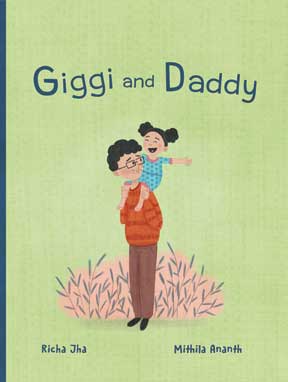
Title of the book: Giggi and Daddy
Author: Richa Jha
Illustrator: Mithila Ananth
Publisher: Pickle Yolk Books
Year of publication: 2019
This book is about the relationship between a girl named Giggi and her father. He is completely different from the father in Nidhi Chanani’s book Pashmina. He likes to tell Giggi about how thrilled he was to learn that he was going to have a baby. In preparation for his new role, he joined a “School for Super Dads” that taught him “the ABC of daddyhood.” He wanted to be the best father in the world, so he decided to learn what it would take.
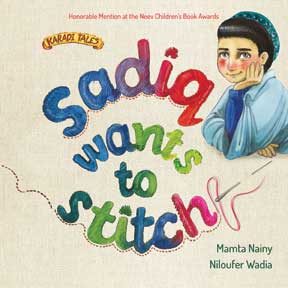
Title of the book: Sadiq Wants to Stitch
Author: Mamta Nainy
Illustrator: Niloufer Wadia
Publisher: Karadi Tales
Year of publication: 2019
The protagonist of this story is a boy who belongs to the nomadic Bakarwal community. The author describes them as “shepherds and goatherds in the PirPanjal ranges and the Himalayan Mountains of Jammu and Kashmir.” Sadiq lives with his mother, who earns her livelihood from making and selling embroidered rugs. His father died two years ago.
Sadiq looks after their flock of sheep. He milks them, takes them to the meadows for grazing, and also gathers firewood for cooking. He loves needlework and wants to help his mother make rugs. However, she is reluctant to involve him in that task. Boys in their community do not stitch and embroider.
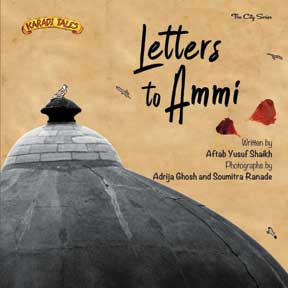
Title of the book: Letters to Ammi
Author: Aftab Yusuf Shaikh
Photographers: Adrija Ghosh and Soumitra Ranade
Illustrator: Aparna Trikkur
Publisher: Karadi Tales
Year of publication: 2019
This book is structured in the form of letters written by a girl named Fatima to her dead mother. Fatima lives with her father in Jaipur but is currently visiting her aunt in Delhi. He wanted to accompany her on the trip but could not make time immediately. Moreover, he finds it painful to even set foot in Delhi because the city holds memories of his departed wife. Fatima is a sensitive person. She does not want her father to deal with that pain yet again.
Along with her aunt, Fatima visits several important heritage sites in Delhi. Her letters sparkle with details. She misses Ammijaan because her aunt recalls moments when her mother visited the same places. Delhi also happens to be the city where Fatima’s mother was buried. When Fatima visits the grave, she writes, “I am so close to you but still cannot meet you or kiss your cheeks. I can’t hold you or hug you. I can’t even fight with you…Every place in this city shows me how full of life you were, and then it reminds me that you are gone.”
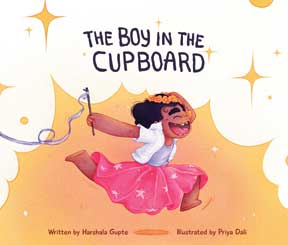
Title of the book: The Boy in the Cupboard
Author: Harshala Gupte
Illustrator: Priya Dali
Publishers: Gaysi Media and Lettori Press
Year of publication: 2021
This book is about Karan, who likes to wear flowers in his hair and drape his mother’s saree like a gown. He enjoys having his own kitchen set. When he steps out to play cricket, other boys tease him for having a pink bat. Karan does not want people to insult him or laugh at him, so he spends much of his time inside a cupboard where it is dark but safe. His mother is quite worried. When he shares his true feelings, she assures him of her unconditional love.
Karan is queer. The cupboard is a literal depiction of the metaphorical closet. His mother wants him to walk into the light and shine. The author writes, “There are many like him, if you only look – in your neighborhood and school corridors, amongst your friends and your family.” As a child, Gupte felt dejected “for being different than the majority.” She wishes that her peers knew how hurtful the bullying was since she had to carry the hurt for many years. These feelings prompted her to write the book.

Title of the book: Home
Author: Fausto Aarya De Santis
Illustrator: Ogin Nayam
Publisher: Pratham Books
Year of publication: 2021
This book addresses the subject of armed conflict, forced migration, borders and refugees. Hasina is a girl who lives in a village where her father makes scarves and shawls, and her mother is a storyteller. There is no direct mention of religious or ethnic persecution but Hasina tells us, “Amma says we can only go to places where people look like us.” One day, they are compelled to run away from home in order to save their lives.
Hasina’s family and others in the village realize that home is no longer a safe place when their imam uses the mosque’s loudspeaker to announce, “Run with what you have in hand. Don’t go home. There is no time. Armed men are coming towards us and burning everything they pass.” Hasina escapes with her mother, and finds shelter in a refugee camp, but she is separated from her father and other relatives.
(The images of the book covers were provided by the respective publishers.)
The author is a writer, educator and researcher who tweets @chintan_connect and can be reached at chintangirishmodi@protonmail.com.
